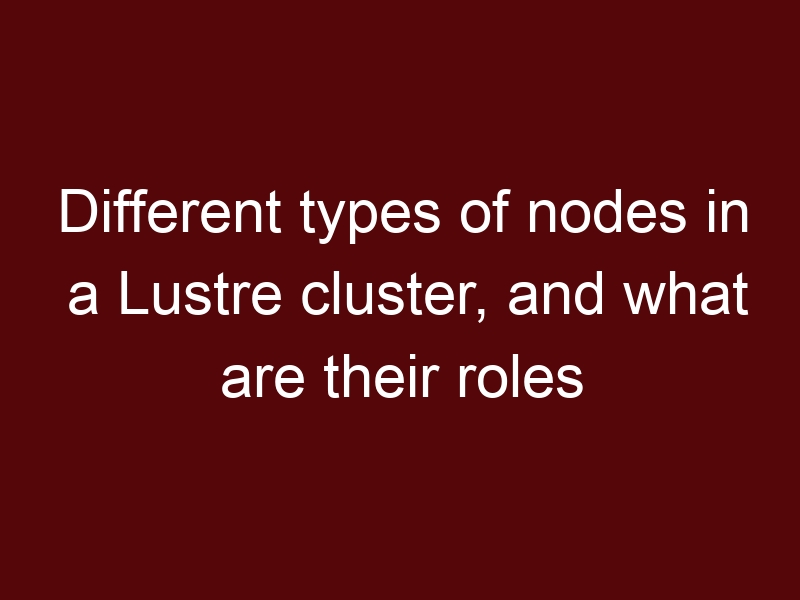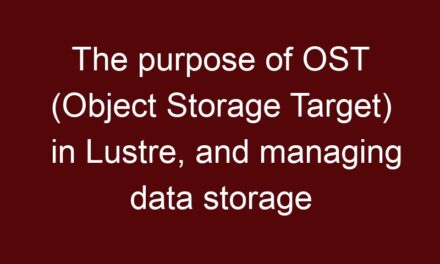In a Lustre cluster, several types of nodes work together to provide a high-performance and scalable file system environment. Each type of node has specific roles and responsibilities in the Lustre file system. The main types of nodes in a Lustre cluster are:
- Client Nodes:
- Role: Client nodes are the compute nodes or servers that access and use the shared Lustre file system. They run the Lustre client software, which allows them to communicate with the Metadata Servers (MDSs) and Object Storage Targets (OSTs).
- Responsibilities: Client nodes initiate read and write operations on the Lustre file system, interact with MDSs for metadata operations (such as file creation, deletion, and file attribute changes), and communicate directly with OSTs to read and write data.
- Metadata Server (MDS):
- Role: The MDS is responsible for managing file system metadata, including directory structures, file attributes, and access control information.
- Responsibilities: MDS nodes handle metadata operations from client nodes. They coordinate file access, manage locks to avoid conflicts during concurrent operations, and maintain metadata consistency across the file system.
- Object Storage Target (OST):
- Role: OSTs are responsible for storing the actual file data in Lustre. Each OST is a storage server with one or more physical storage devices, such as hard drives or solid-state drives.
- Responsibilities: OST nodes handle data read and write operations from client nodes. They perform striping of data across multiple storage devices to achieve high I/O performance and parallelism. Each OST manages its portion of the file data, and data redundancy can be achieved through replication if configured.
- Object Storage Server (OSS):
- Role: OSSs manage the Object Storage Targets (OSTs) within a Lustre file system.
- Responsibilities: OSS nodes receive data requests from client nodes and direct these requests to the appropriate OSTs. They manage data placement and striping to optimize performance. In larger Lustre clusters, there can be multiple OSS nodes to balance the workload and achieve high throughput.
- Lustre Management Server (LMS):
- Role: The LMS is responsible for managing and coordinating Lustre file system configurations and policies.
- Responsibilities: LMS nodes handle the management and configuration of Lustre components, such as OSTs, MDSs, and OSSs. They provide tools and utilities for system administrators to monitor and manage the Lustre file system.
- Distributed Lock Manager (DLM):
- Role: The DLM provides distributed locking functionality to coordinate access to shared files.
- Responsibilities: The DLM ensures that concurrent access to shared files by multiple client nodes is coordinated properly to avoid conflicts and maintain data integrity.
- Network File System (NFS) Gateway:
- Role: The NFS Gateway allows non-Lustre clients to access the Lustre file system via the Network File System (NFS) protocol.
- Responsibilities: NFS Gateway nodes provide an NFS interface to the Lustre file system, enabling standard NFS clients to read and write data to Lustre, making it more accessible to a broader range of systems.
By coordinating the roles and responsibilities of these different types of nodes, Lustre achieves its distributed and parallel architecture, enabling high-performance parallel I/O operations for large-scale data processing and high-performance computing workloads.





